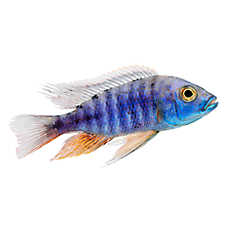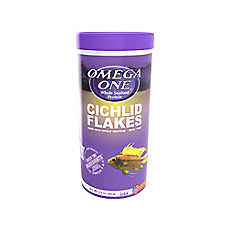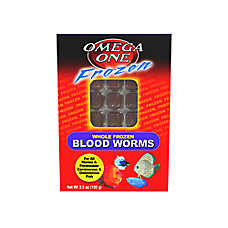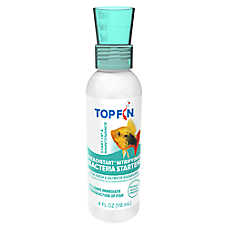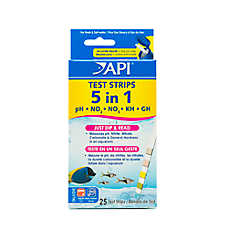Goldfish & Koi Care Guide
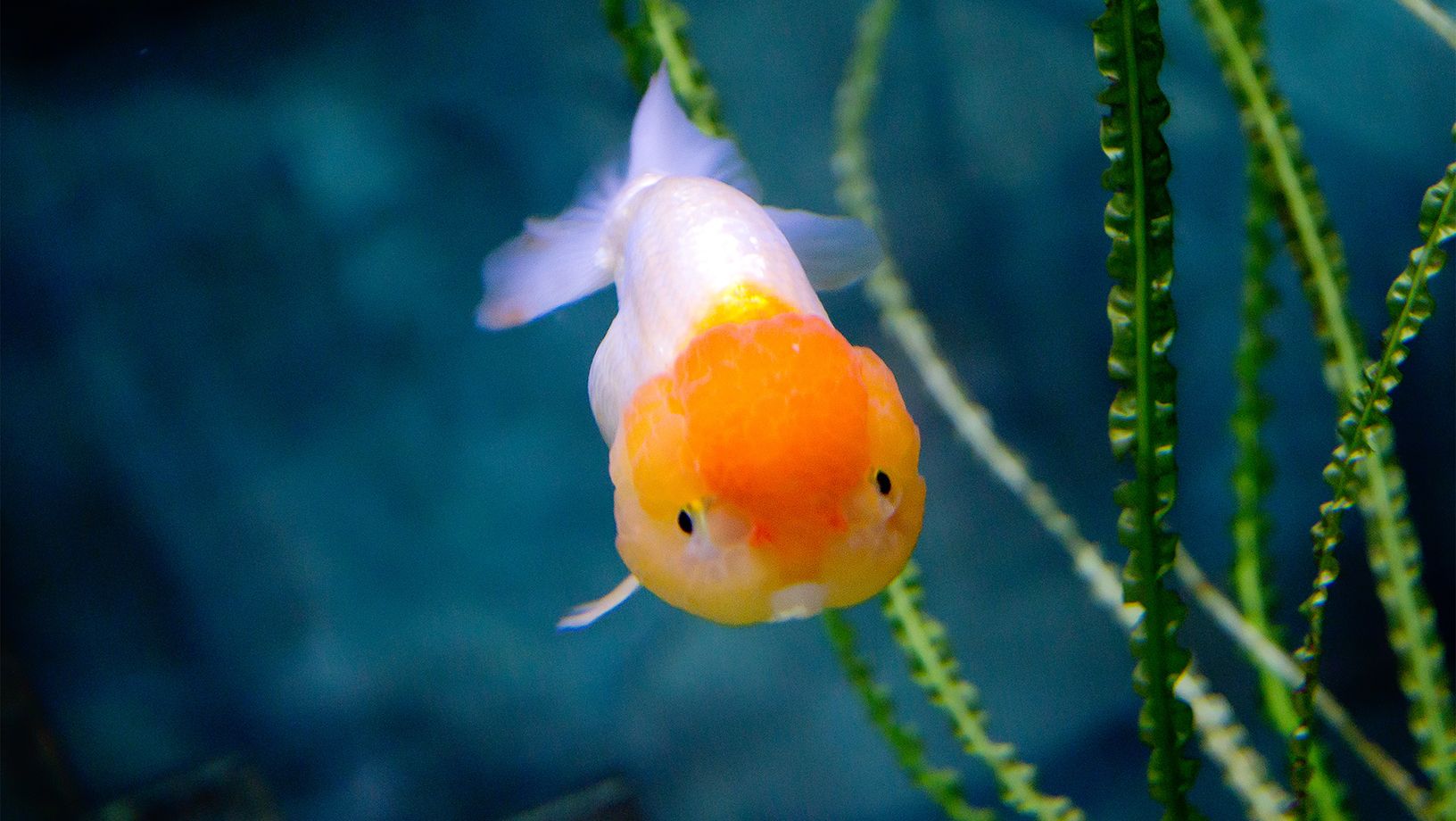
In this Article
Colorful & Playful
Contrary to popular belief, a fishbowl is not an appropriate home for goldfish. Another common myth is that fish only grow to the size of their tank – this is untrue. When kept in undersized environments, goldfish often suffer from serious health problems and shortened lifespans. With proper care in a spacious, filtered tank, goldfish can thrive for many years and make wonderful pets.
Goldfish and Koi Fish Behavior
Peaceful by nature, goldfish thrive in cool water tanks (kept at room temperature, as they produce a lot of waste). They are schooling by nature and do fine in schools of at least three in tanks that offer 20 gallons of water per goldfish.
Koi need significantly more space - 240 gallons per fish - and do best in koi-only aquariums or outdoor ponds, in groups of three or more.
When keeping fish as pets, there are no guarantees that the fish will get along. You should always monitor your fish for signs of stress or aggression and be prepared to move the fish from the aquarium.
It can also be helpful to rearrange and add décor to create more territories and hiding places. Live plants help maintain water quality and provide hiding places for fish. Adding live plants and varied décor not only improves water quality but also reduces stress and encourages natural behavior. The more enrichment you offer, the more active and visible your fish will be - just like giving toys or cozy spots to a dog or cat!
Comet Goldfish
SIZE: Up to 10”
LIFESPAN: 10-20 years, potentially longer in ideal conditions
EXAMPLES: Small Comet, Large Comet (Carassius auratus)
TANK SIZE: 20+ gallons per fish
WATER TEMP: 65-75° F (18-24° C)
HABITAT: Natural gravel substrate and décor.
BEHAVIOR: Peaceful
SCHOOLING: Yes, best kept in groups of 3 or more
COMMUNITY: Goldfish do best kept in a species-only aquarium, sharing space with other goldfish with similar requirements.
NATURAL DIET: Algae, plants, insects and crustaceans.
FOOD: High quality goldfish flakes, pelleted food, or vegetable-based food
Fancy Goldfish
SIZE: Up to 10”
LIFESPAN: 10-20 years, potentially longer in ideal conditions
EXAMPLES: Oranda Goldfish, Ryukin Goldfish (Carassius auratus)
TANK SIZE: 20+ gallons per fish
WATER TEMP: 65-75° F (18-24° C)
HABITAT: Natural gravel substrate and décor.
BEHAVIOR: Peaceful
SCHOOLING: Yes, best kept in groups of 3 or more
COMMUNITY: Goldfish do best kept in a species-only aquarium, sharing space with other goldfish with similar requirements.
NATURAL DIET: Algae, plants, insects and crustaceans.
FOOD: High quality goldfish flakes, pelleted food, or vegetable-based food
Fancy Koi
SIZE: Up to 36”
LIFESPAN: 25-50 years, potentially longer in ideal conditions
EXAMPLES: Butterfly Koi, Assorted Koi (Cyprinus carpio)
TANK SIZE: 240+ gallons per fish
WATER TEMP: 65-75° F (18-24° C)
HABITAT: Natural gravel substrate and décor.
BEHAVIOR: Peaceful
SCHOOLING: Yes, best kept in groups of 3 or more
COMMUNITY: Koi make a stunning addition to ponds where their colors can be observed from the top down. They can be very charming around meal times and recognize the people that regularly care for them!
NATURAL DIET: Algae, plants, insects and crustaceans.
FOOD: High quality goldfish flakes, pelleted food, or vegetable-based food
Typical Goldfish Aquarium:
- Glass or acrylic tank
- Hood or tank cover with light
- Thermometer
- Gravel or sand
- Décor for hiding and enrichment
- Live or artificial plants
- Heater
- Filter
Setting Up Your Aquarium
- Select the right aquarium and supplies. Choose the appropriate tank size, substrate, decorations, and equipment for your fish species. A PetSmart associate can help guide you.
- Position the tank on a level, stable surface that can safely support its weight when filled. Water weighs 8.3 pounds per gallon.
- Rinse all substrate and décor thoroughly with tap water to remove dust and debris. Do not use soap or detergents.
- Add the substrate to the tank, then arrange decorations and ornaments as desired.
- Fill the tank with tap water and add a water conditioner/dechlorinator to remove harmful chlorine or chloramine. If your home uses a water softener, use a faucet that bypasses it.
- Install all equipment - filter, heater, thermometer, lights - following the manufacturer’s instructions.
- Set your lights on a 12-hour on/off cycle. An automatic timer helps maintain consistency.
- Let the tank run for at least 24 hours to stabilize temperature and confirm that equipment is working correctly.
- Begin cycling your tank. Add a few hardy fish or use the fishless cycling method (learn more in Setting Up an Aquarium). Always use a beneficial bacteria starter to support the cycle.
- Test water daily during cycling. Perform a water change if ammonia or nitrite exceeds 0ppm, or nitrate rises above 20ppm.
- Always use water conditioner during water changes.
- Quarantine any new fish for 30 days in a separate, cycled tank before adding them to your main aquarium.
Koi Ponds:
- Work with an experienced pond builder and keeper to get your pond setup and cycled prior to bringing home your koi.
- Quarantine new koi for 30 days prior to adding them to your pond to reduce risk of introducing disease to your pond.
When should I test my water quality?
- Fish are sluggish, near the bottom of the tank or pond
- Fish are at the top, breaking the water to breathe
- Fish are not eating
- Sudden behavior changes in your fish
- Water is cloudy
- Water smells funny
PetSmart offers free water quality testing and one of our knowledgeable associates can help you get your system balanced.
When should I contact a veterinarian?
Contact an aquatic veterinarian if you notice the following signs:
- Unusual swimming pattern
- Thinness or decreased appetite
- Abdominal swelling
- Inflamed or discolored skin/fins
- Fins clamped to sides of body
- Scraping body on rocks (flashing)
- Visible signs of illness or recent fish loss
If your fish show any of the signs above, we recommend using the “Find a Fish Vet” tool at fishvets.org or wavma.org to locate a qualified aquatic veterinarian in your area.
SHOPPING CHECKLIST
What will I need for my koi fish and goldfish?
- Aquarium sized appropriately for the species and number of fish, (60+ gallon) with stand
- Aquarium top/hood with light fixture
- Natural aquarium gravel & gravel vacuum
- Tank décor like driftwood or ornaments
- Live or artificial plants (goldfish and koi may eat live plants)
- Aquarium heater and thermometer
- Aquarium filter sized for your tank
- Water testing kit or strips
- Water conditioner/dechlorinator
- Beneficial bacteria starter
- Algae cleaning pad or scraper
- Species-appropriate pellets or flakes and frozen fish food
Ready to learn more?
This guide is a great starting place, but we encourage you to do more research on the individual species that you are keeping so that you can be as successful as possible with your aquarium! This guide is a great starting place, but we encourage you to do more research on the individual species that you are keeping so that you can be as successful as possible with your aquarium!
Related guides:
Vet Assured™: Pets purchased at PetSmart are part of our exclusive Vet Assured™ program, designed by PetSmart veterinarians to help improve the health and well-being of our pets. Our vendors meet a high standard in caring for pets and screening them for common illnesses. This program also includes specific standards for in-store pet care.
The PetSmart Promise: If your pet becomes ill during the initial 14-day period, or if you’re not satisfied for any reason, PetSmart will gladly replace the pet or refund the purchase price.
Safety tips for you and your pet:
1. ALL ANIMALS can potentially carry viral, bacterial, fungal, and parasitic diseases contagious to humans. 2. Thoroughly wash your hands with warm, soapy water before and after contact with any pet or its habitat. 3. Adults should assist children with hand washing after contact with a pet, its habitat or aquarium water. 4. Always add a dechlorinator or water conditioner and bacteria starter to tap water before adding it to the aquarium. 5. Do not use soaps or detergents to clean aquarium or decor, since they are toxic to fish. For more information, visit petsmart.com, cdc.gov/healthypets, or contact your veterinarian.
This care guide contains general information for the proper care of your pet, but is not comprehensive and is not a substitute for veterinary advice or care. PETSMART and VET ASSURED are trademarks of PetSmart Home Office, Inc. © 2025 PetSmart. All rights reserved.
The PetSmart Promise: If your pet becomes ill during the initial 14-day period, or if you’re not satisfied for any reason, PetSmart will gladly replace the pet or refund the purchase price.
Safety tips for you and your pet:
1. ALL ANIMALS can potentially carry viral, bacterial, fungal, and parasitic diseases contagious to humans. 2. Thoroughly wash your hands with warm, soapy water before and after contact with any pet or its habitat. 3. Adults should assist children with hand washing after contact with a pet, its habitat or aquarium water. 4. Always add a dechlorinator or water conditioner and bacteria starter to tap water before adding it to the aquarium. 5. Do not use soaps or detergents to clean aquarium or decor, since they are toxic to fish. For more information, visit petsmart.com, cdc.gov/healthypets, or contact your veterinarian.
This care guide contains general information for the proper care of your pet, but is not comprehensive and is not a substitute for veterinary advice or care. PETSMART and VET ASSURED are trademarks of PetSmart Home Office, Inc. © 2025 PetSmart. All rights reserved.

